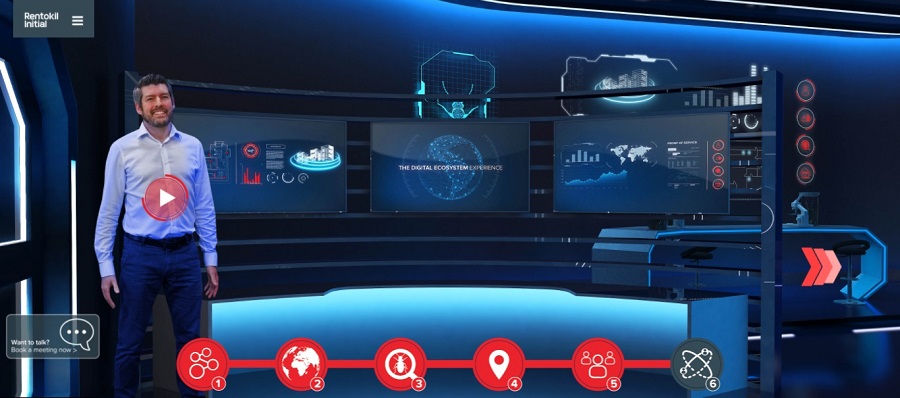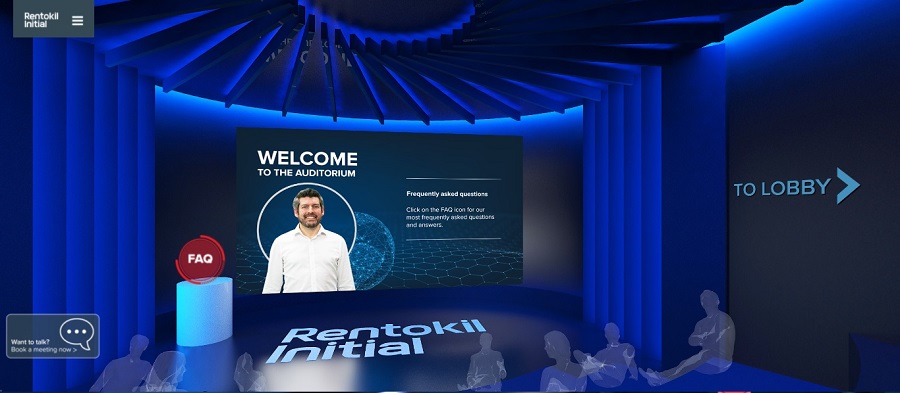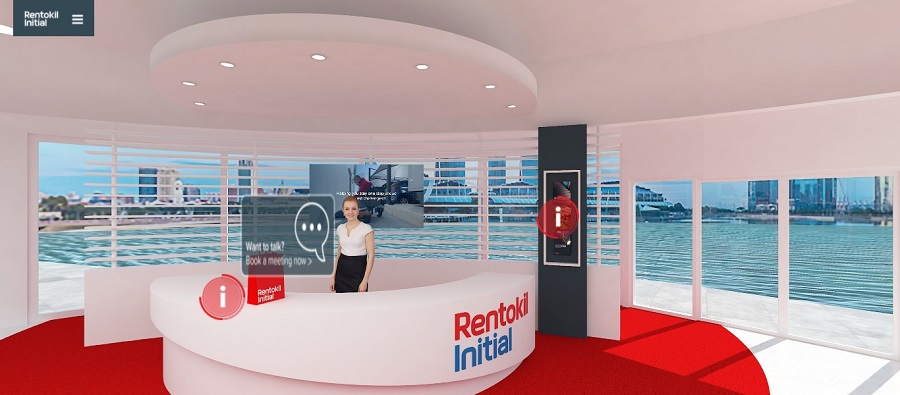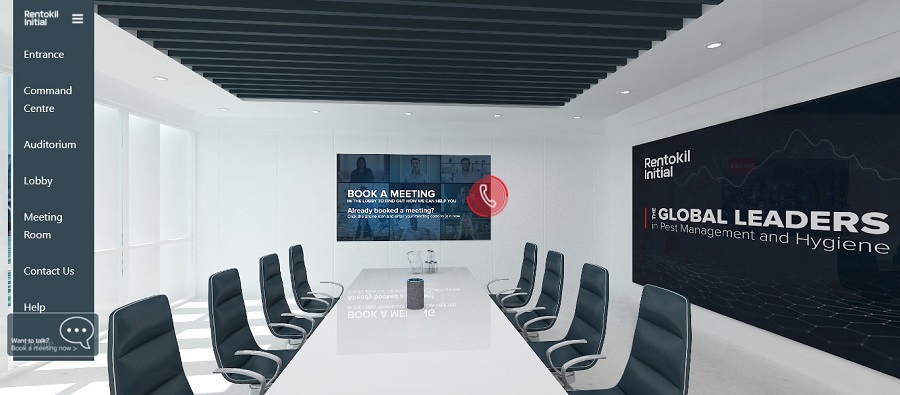
Designing virtual events around human needs
The ongoing shift to virtual in life, work and business has not been entirely free of hiccups. Many businesses who have moved from annual in-person events to more frequent online events are facing a challenge: virtual fatigue.
The actual problem lies not in the medium, but in a failure to engage creatively within the medium.
For example, features such as one-to-one chat and videoconferencing software integration and in-built matchmaking offer a tempting canvas for events, but the danger is that event planners may view technology as the solution rather than as a tool.
Meanwhile, the highly competitive pricing of virtual platforms has meant that most clients end up budgeting against technology, not against audience needs.
What is too frequently forgotten is that the real value comes in designing the experience into the technology.
How to design the experience into the technology
The most practical advice is also the most obvious: treat virtual as its own unique format, not as a replacement for live.
As an exhibitor or event organizer, you probably wouldn’t think of designing a stand without some level of entertainment and, even better, a clear proposition connecting your design with your engagement activity. And yet this thinking is rarely applied in virtual.
Similarly, deploying a facilitator is one of the simplest ways to ensure engagement. Online participation can be jeopardised by the least distraction, so virtual events require an altogether tighter approach than physical, with shorter overall programme times and content sections and – ultimately – higher quality content.
Let’s look at an example of our own: Pico was tasked to create an online community event for SWITCH, a major component of the Singapore FinTech Festival x Singapore Week of Innovation and Technology (SFF X SWITCH) event. It is a global platform that connects people and catalyses new partnerships between innovation enablers, enterprises and start-ups from Singapore and around the world.
Our response was not simply an event, or a webinar, but a ‘digital city that never sleeps’ modelled after the Buona Vista district – the real-life nexus of Singapore’s tech community.
Within its boundaries, attendees immersively explored various unique villages, connecting with a population of more than 1,000 exhibitors and sponsors. Users could customise their agenda and interact via text chat functions to personalise the experience. The intuitive usability of the platform helped foster new partnerships and opportunities between all participants.
SWITCH contributed to the SFF X SWITCH show’s overall results which included 4,400 meetings facilitated, over 200 content sessions and 3.5 million views globally.
These results were phenomenal. Why? Because the content was uniquely relevant, the format was fast and bite-size, and the technology gave viewers opportunities for unique interaction.
Experiences are emotional
Event audiences are looking for a range of gratifications which go beyond cognition (information) and entertainment to self-identification, social interaction and escapism. Experience design therefore begins with a deep understanding of audience. We ask questions which go beyond the client’s expectations to define the event outcome as precisely as possible.
Gamification is a common approach to boosting audience engagement at virtual events, but the idea itself has fallen victim to simplistic, rather than simplifying logic. As one platform after another began to present token-collecting as a guarantee of engagement, did no event organizer stop to ask themselves why they’d never hidden candy around the room at their physical events to encourage participation?
The answer is that if we’re attending events of this sort, we’re just not that easily gratified. Sticking with gaming, which we see as a helpful framework to consider engagements, we’d rather look to Minecraft, Fortnite or Call of Duty for inspiration to deliver deeper levels of gratification.
So what do those three vastly different platforms have in common? Immersive environments, the ability to explore and be surprised, to self-express and to achieve. All three gaming platforms are also enhanced by the first-person avatar experience.
Our recent project for Rentokil Initial provides a good example. The client – the world’s leading commercial pest control and hygiene services provider – wanted to reproduce their Digital Ecosystem Experience (DEE) for a wider audience of potential buyers. In its original form, the DEE was an online presentation in a darkened room, which would inherently limit its appeal to a new audience of CTOs, estate managers and the like.
The reproduction aimed to give users a deeper understanding of the brand’s global digital ecosystem. Pico’s approach was to fully commit to Rentokil’s physical model. We broadened out the darkened room to a futuristic control centre populated with glowing, pulsing digital displays and content that could keep potential buyers’ business ahead in pest management.


Users could navigate at their own speed, indulging their curiosity in a succession of distinctive interactive spaces. The platform also featured an auditorium to host live and pre-recorded content, before visitors exited into Rentokil’s reception, where they could chat, book an appointment or join a meeting.


Since its launch at the 2021 Global Food Safety Initiative Conference, Rentokil Initial has continued to roll out the DEE, and continues to use the virtual space, including post-event digital campaigns in markets around the world and at other virtual events.
An experience is more than ‘three clicks’
From the early days of experimentation with website design, practice has slowly homogenised around a principle of ‘three clicks’ – meaning that web design became about click minimisation and ease of access, not exploration.
The efficient provision of information and relatively homogenous design principles took priority over the gratification of emotional needs and led us to a place where most websites look identical.
Equally, virtual and hybrid events which are not specifically designed to respond to the broader psycho-social needs of their audiences, and which simply replace experience with efficiency, are no model for the future.
Effective virtual event design is demanding. But the reward is a different paradigm for engagement and engagement analytics. Despite the current ‘virtual fatigue’, Pico will continue to champion this fascinating event format and innovate within it.
Pico’s six principles for paradigm-busting virtual events:
- Remember that virtual is its own unique format: stay creative and open to the possibilities.
- Begin with gaining as deep an understanding of audience as you can possibly get.
- Stay with the experience: it’s the ‘experience’ part of events which make them so powerful.
- Interaction has to be designed into the technology: even the best technology can’t do the job by itself.
- Remember that effective engagement requires investment in design, planning and creative, regardless of the platform.
- Uniquely relevant content trumps technology, every time.